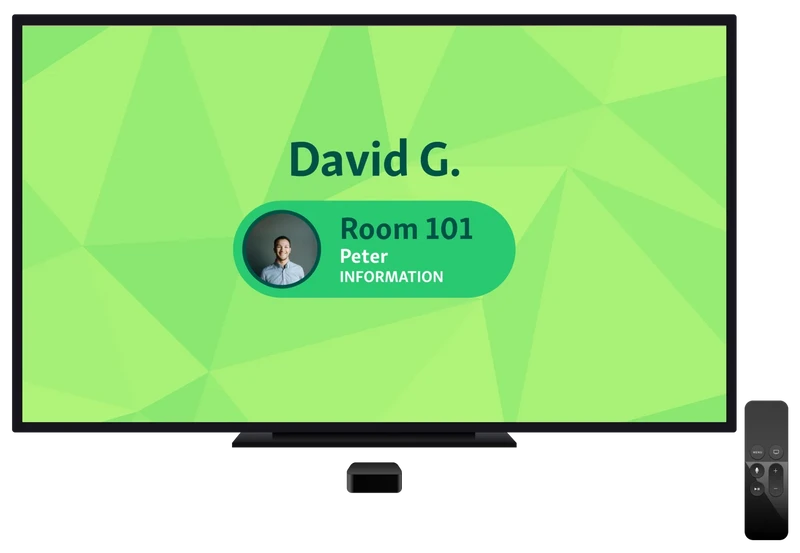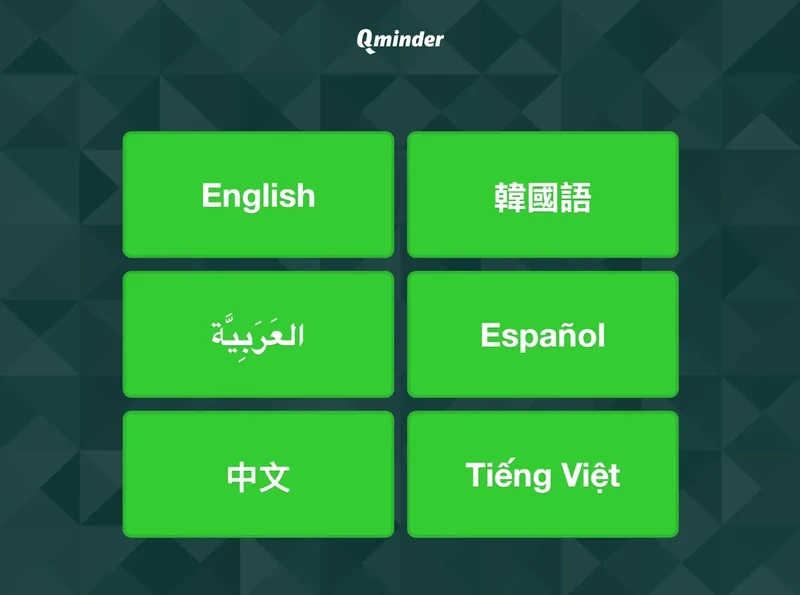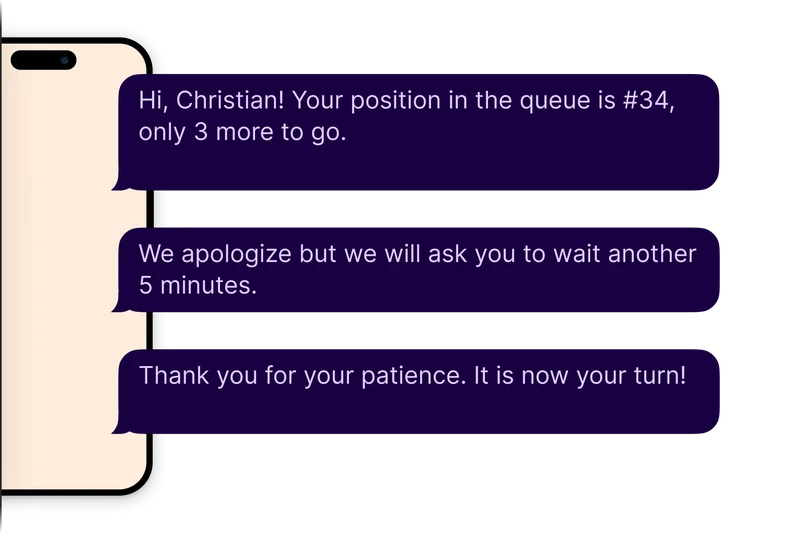Efficient citizen service in government offices comes down to managing wait times and keeping visitors informed. Traditional waiting areas get crowded and stressful fast, especially when citizens can't see what's happening with service progress.
Waiting room solutions, particularly waiting room TV services, are changing this. They provide real-time updates, announcements, and entertainment while people wait.
In a government waiting room, these systems cut down perceived wait times and improve transparency.
In this blog, we'll explore how waiting room solutions and TV services benefit government offices and streamline operations.
Key Benefits of Waiting Room TVs for Government Offices
Government offices often face long lines and crowded lobbies, leaving visitors frustrated and stressed. Here are the key benefits of using these solutions.
1. Real-Time Queue Updates
Waiting room TV services allow a government waiting room to display live updates, including current ticket numbers, estimated wait times, and service counters being called.
By providing this real-time information, visitors are no longer left guessing about how long they’ll wait. This transparency reduces uncertainty and frustration, creating a calmer, more organized environment. Citizens feel informed and empowered, which improves their overall experience while easing pressure on staff to answer repetitive questions about queue status.

Additional Benefits:
Encourages visitors to arrive prepared with required documents
Highlights priority or special service lanes, improving accessibility
Can display multilingual updates for diverse citizen populations
Offers opportunities to share public announcements or important notices during wait times
2. Improved Citizen Experience
Waiting room TV services make a real difference in government waiting rooms by showing visitors exactly what's happening. When people know where they are in the queue, they feel more in control. The anxiety drops. The wait doesn't feel as long.
Take DMVs for instance. Citizens report they're much happier when waiting room solutions show them their place in line and which counter they'll go to next. Instead of a stressful guessing game, it becomes predictable and manageable.
Additional Benefits:
Fewer complaints and "how much longer?" questions at the desk
Citizens are less frustrated, so staff interactions go better
Visitors can step out for a quick break without losing their spot
People see the system working and trust that government services are running efficiently
3. Reduced Lobby Congestion
Waiting room TV services help manage visitor flow by keeping citizens informed about their place in the queue. When people can see real-time updates, they are less likely to crowd service counters to ask about their turn.

This creates a calmer, safer government waiting room and allows staff to focus on providing services rather than answering repetitive questions about queue status.
Additional Benefits:
Minimizes bottlenecks in high-traffic areas
Encourages orderly movement within the waiting area
Reduces stress for both visitors and staff
Supports social distancing by allowing citizens to wait comfortably in designated areas
4. Opportunities for Announcements and Alerts
Waiting room TV services provide a dynamic platform to share important information with visitors in a government waiting room. Offices can display service updates, policy changes, or emergency notices, ensuring that citizens are informed while they wait.
For instance, many DMVs use waiting room solutions to alert visitors about required documents for specific services, reducing delays and repeated trips.
Additional Benefits:
Promote upcoming services, deadlines, or office closures
Highlight safety guidelines or public health advisories
Provide multilingual instructions for diverse visitor populations
Reinforce positive government messaging while citizens wait
5. Educational and Engagement Content
Waiting room TV services can go beyond queue updates by sharing educational and engaging content in a government waiting room. Offices can display helpful information, highlight government initiatives, or promote community programs, turning idle wait time into a productive experience.
By keeping visitors engaged, these waiting room solutions reduce the perceived length of waiting, improve overall satisfaction, and create a positive impression of the office.
Additional Benefits:
Educates citizens on available services and procedures
Encourages participation in community programs or public initiatives
Enhances transparency by explaining government processes
Provides visually appealing content that captures attention and interest
6. Support for Multilingual Communication
Waiting room TV services can display information in multiple languages, making government waiting rooms more accessible for diverse communities. By offering updates, instructions, and announcements in the preferred language of visitors, offices can reduce confusion and ensure everyone understands the process.

At DMVs and city halls, multilingual support removes barriers for non-English speakers, creating a more inclusive and welcoming environment.
Additional Benefits:
Improves compliance with required procedures
Reduces repeated questions and errors
Enhances trust and confidence in government services
Supports culturally diverse populations effectively
You might also like - Waitlist Monitor: What It Is and How It Works
Best Practices for Using Waiting Room TVs in Government Offices
Implementing waiting room TV services effectively requires thoughtful planning. Here are some key practices to follow.
Keep Information Clear and Concise
In a government waiting room, waiting room TV services should display simple ticket numbers, estimated wait times, and next steps. Clear and concise information helps visitors understand their status quickly, reducing frustration and improving the overall experience.
Balance Queue Info with Content
Waiting room TV services should strike a balance between queue updates and engaging content. By combining real-time ticket and wait information with educational tips, government initiatives, or light entertainment, visitors stay informed while feeling that their wait is shorter and more enjoyable.
Ensure Accessibility for All Visitors
Waiting room TV services should be accessible to every visitor. Position screens in clearly visible areas, and consider providing audio cues or alternative channels like SMS updates to ensure that citizens with visual or hearing impairments can receive timely queue information.

Also read - The Ultimate Waiting Room Checklist: 65+ Ways to Enhance Your Space [PDF]
Improve Citizen Experience with Waiting Room TVs
Implementing waiting room TV services in government offices transforms the waiting experience for citizens. By providing real-time queue updates, clear communication, multilingual support, and engaging content, offices can reduce stress, improve transparency, and increase satisfaction.
When visitors understand where they stand in line and have access to helpful information, both frustration and lobby congestion decrease, making operations smoother for staff and more pleasant for citizens.
Qminder offers a comprehensive waiting room solution designed for government offices, delivering real-time updates and enhanced citizen engagement.
Start your free trial today and modernize your government waiting rooms.
Yes. Many waiting room solutions allow administrators to override regular content to broadcast urgent notifications, safety alerts, or emergency instructions instantly to all visitors.
Some advanced waiting room TV services provide analytics to track which messages or content sections capture attention most, helping offices refine communication strategies.
Yes. Modern solutions can integrate with appointment systems, visitor management tools, or mobile apps to streamline updates and provide a connected, seamless experience for citizens.






